Austrian armored vehicles of the interwar period. Part II
When developing the ADGK project, Austro-Daimler engineers identified the prospects for triaxial armored vehicles. This technique looked interesting and promising, but its full potential could only be achieved with the all-wheel drive chassis. This is how the new ADKZ project, the development of which was launched in 1935, appeared. The task of the project was not only the creation of a new armored car with high performance, but also the solution of several problems that accompanied the Austrian three-axis machines of the time.
The chassis for the new armored vehicle was created on the basis of developments in civilian vehicles. The three-axle chassis had wheels with bullet-resistant tires. Driven single-pitch wheels were mounted on the front axle, dual rear wheels on the two rear axles. In the stern of the chassis, the Daimler M650 petrol engine with 105 horsepower was installed.
For the ADKZ armored car, an original armored hull of characteristic shape was developed. To improve a number of parameters, the Austrian designers decided to move the engine to the rear, and move the turret with weapons forward. All this affected the appearance of the hull and the armored car as a whole. The body was proposed to be welded from armor plates of different thickness. Thus, the details of the hull forehead had a thickness of 14,5 mm, the bead and stern were 11 and 9 mm, respectively. The roof and the bottom of the armored car had the same thickness, 6 mm. The tower was made of sheets 11-14,5 mm thick. An interesting feature of the armored steel body attachment for additional rollers provided in the lower part of the front sheet. Two small additional "wheels" were intended to more easily overcome ditches, etc. obstacles.
The layout of the internal volumes of the ADKZ armored car is a bit similar to the one used on the ADGZ. In the front and middle parts of the corps there was a fighting compartment with crews of four people. Behind the front sheet was located front control post. In accordance with the views of that time, a new armored car received two control posts, the second was placed at the rear of the crew compartment. Two mechanics had to drive the armored car, but if necessary, one of them could be excluded from the crew.
On the roof of the case there was a hexagon tower, assembled from armor plates of different thickness. In her front sheet there were two ball mounts for weapons. Thanks to these units, the 20-mm Solothurn cannon and the Schwarzloze 7,92-mm machine gun could be guided independently of each other. On the outer surface of the tower were provided for mounting for the handhold antenna of the radio station.
During the creation of the ADKZ project, Austro-Daimler joined the Steyr-Daimler-Puch conglomerate. Similar transformations didn’t touch defense developments, except for changing the full name of the new projects. The first prototype of the Steyr-Daimler-Puch ADKZ armored car was built in the 1936 year. It was intended for testing and therefore did not receive a piece of equipment. It was missing a radio station with an antenna on the tower, weapons and front rollers. The weight of the empty armored vehicle reached 4 tons. According to calculations, the combat weight of the machine was to exceed 7 tons. The three-axle armored car turned out to be relatively compact: length less than 4,8 meter, width 2,4 m and height 2,4 m.
During the tests, the first ADKZ armored vehicle revealed some problems with the original chassis. It took time to eliminate them, which is why the construction of the second armored car started only in 1937 year. It differed from the first one by the modified chassis and powerplant, as well as by the hull of the updated design. The hull lines improved a little, removing some parts and corners. In addition, a number of new parts were installed on the case. For example, the second prototype received lights recessed in the wings, as well as an additional searchlight, which was installed on the turret, between the gun and the machine gun. Also, the hatches of the crew were refined.
In the 1937 year, both prototypes of the ADKZ armored car were tested and showed fairly high performance. On the highway, cars accelerated to 75 km / h, and also behaved confidently on dirt roads and rough terrain. The firepower of the cannon and machine gun looked promising.
History The ADKZ project was completed shortly after the end of the tests. According to the results of the comparison of two cars of this model with the ADGZ armored car, it was decided to adopt the latter. The four-axle armored car outperformed the three-axle competitor in a number of parameters, both in terms of running characteristics and armament. Comparison of two combat vehicles ended with the signing of a contract for the supply of ADGZ.
ADAZ
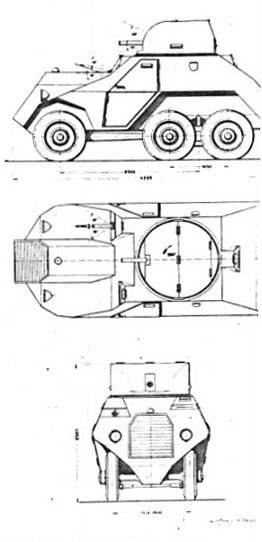 In 1936, the Austrian designers made another attempt to create a simple three-axle armored car with high performance. In the new project, called ADAZ, it was supposed to make extensive use of the developments on the ADGK armored car. So, the chassis and body of the new machine should have been similar to the corresponding units of the previous design.
In 1936, the Austrian designers made another attempt to create a simple three-axle armored car with high performance. In the new project, called ADAZ, it was supposed to make extensive use of the developments on the ADGK armored car. So, the chassis and body of the new machine should have been similar to the corresponding units of the previous design.According to some sources, a new chassis designed on the basis of ADGK three-axle armored vehicles was chosen as the basis for the ADAZ armored car. Six single-wheel wheels were to be mounted on a suspension with leaf springs. All six wheels were supposed to be leading.
Various units of the perspective combat vehicle were located in accordance with the “classical” scheme. The gasoline engine was placed under the armored hood in front of the car. Behind it was placed the main armored corps, completely handed over to the department of management. Unfortunately, there are no data on the supposed type of engine, which makes it impossible to talk about the possible running characteristics of the armored car. In front of the habitable volume, a driver and a gunner, armed with an 7,92 mm caliber machine gun, were placed side by side. The second machine gun or weapon was supposed to be installed in the rotary tower. For the use of these weapons had to answer the third member of the crew. In the stern of the armored hull it was proposed to make a second control post. In the future, a second driver could be introduced into the crew. For landing and disembarking the crew, two doors in the sides and a hatch in the roof of the tower were envisaged.
The technologies available at that time in Austria made it possible to make a three-axle armored car with a combat mass of about 6 tons, bullet-proof armor and good armament: a cannon and a machine gun. However, the economic situation in the country forced the Austrian military to carefully select the new technology. It is precisely because of the limited financial capabilities of the Austrian army that the ADAZ project did not go further than the creation of design documentation. In 1936, the Austrian military commission considered the Austro-Daimler proposal (Steyr-Daimler-Puch) and rejected it.
ADG
The second development of 1936 was the ADG project. This project was to some extent an alternative to ADAZ and was similar to it with a number of main features. The ADG armored car was to receive a three-axle all-wheel-drive chassis, anti-bullet reservation and machine-gun armament.
The six-wheeled chassis for the armored car ADG was developed with a wide use of existing developments and technologies. It was proposed to equip it with a gasoline engine, mechanical transmission and single-leaning bullet-resistant wheels. Data on the proposed power plant is missing. Judging by the available information, the ADG armored car could get a petrol engine with a power of 80-100 hp. In order to increase the maneuverability, the armored car could get rollers under the bottom and freely rotating spare wheels fixed on both sides of the hull.
The armored body of the ADG machine was proposed to be assembled from sheets of various thicknesses. As follows from the available materials, the lower part of the body was a box of complex shape, consisting of vertical sheets. Sheets of the upper part of the body, in turn, had to be installed at an angle to the vertical. The stern shape of the ADG's armored hull reminds us of the Fritz Heigl M.25 project.
The body of the armored car ADG was conditionally divided into two compartments: the engine in the front and the habitable, occupying the rest of the internal volume of the body. In front of the fighting compartment were the jobs of the driver and the gunner. The latter was supposed to get a 7,92-mm machine gun. The driver and the gunner could observe the situation through the hatches, closing the lids with viewing slots. On the roof of the hull it was proposed to place a large turret with a commander’s workplace, a machine gun and an 20-mm cannon. Getting into the car and leaving her crew had to be through two doors in the sides and a hatch in the roof of the tower. According to some information, a second driver and another gunner could be included in the crew of the ADG armored car. The second control post and the third machine gun in this case should have been located in the rear of the hull.
The ADG armored car echoed the fate of another vehicle developed in 1936. The seven-ton armored car of the new model had no advantages over direct competitors, such as the ADAZ, ADKZ and ADGZ. According to the results of the comparison of projects and tests of several prototypes, the ADGZ was recognized as the best armored car for the Austrian army. The ADG armored car added to the list of Austrian armored vehicles remaining at the development stage.
ADSK
In the same year 1936, Steyr-Daimler-Puch took up perhaps the most interesting project of its armored car. Unlike the previous ones, a new armored car was offered for patrol, reconnaissance and security tasks. Given this purpose, the armored car, called ADSK, can be considered one of the first armored reconnaissance vehicles.
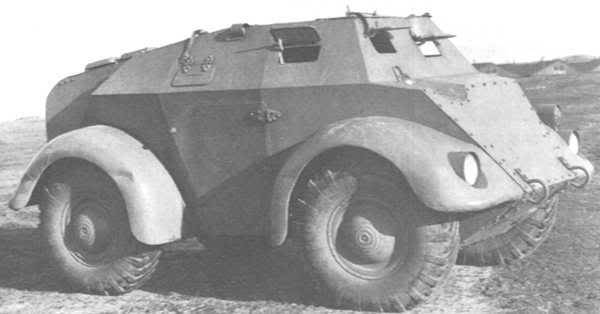
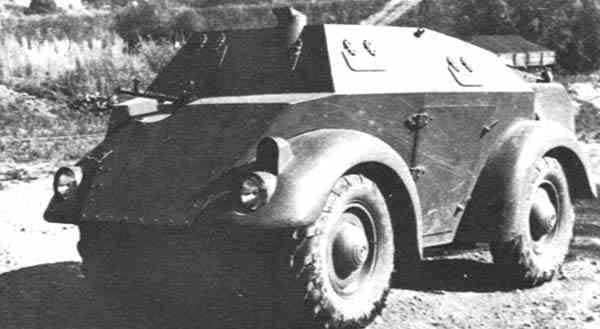
The specificity of the alleged tasks of the ADSK armored car identified the main features of its appearance. It was decided to make the most compact and lightweight machine capable of operating in the rear of the enemy. In this regard, the light tractor Austro-Daimler ADZK was taken as the basis for a promising armored car. This vehicle could carry up to seven armed fighters or tow a trailer weighing up to 2 tons. The chassis of this car after some improvements became the basis of the armored car ADSK.
Thus, the prospective reconnaissance armored vehicle received a four-wheel all-wheel drive chassis with the Steyr engine of 65 hp. Wheels with bullet-resistant tires equipped with leaf springs. An interesting feature of the ADZK chassis and, as a result, the ADSK armored car was a small wheelbase - just a 2 meter. The two-meter base, in combination with the 1410 gauge mm, determined the choice of the basis for a compact armored car.
An armored hull of the original form was installed on the base chassis. From the front corners, the armored car was protected by a single frontal sheet 7 mm thick. The sides of the car consisted of two panels of the same thickness, set at an angle to each other. In the stern of the hull sharply narrowed, forming a casing of the engine of a characteristic shape. In the upper part of the frontal sheet, two observation hatches were provided, covered with covers. Similar hatches were also on the side and stern sheets. In the bottom sheet of the left side there was a relatively large door for embarkation and disembarkation.
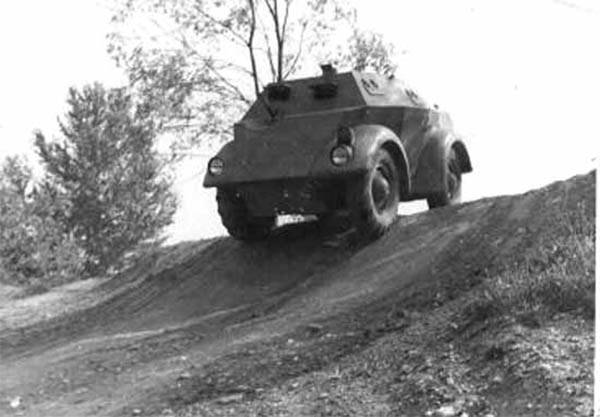
Within the framework of the ADSK project, two variants of a promising armored car were developed. They differed from each other by a number of features. So, in the first version, the crew of the car had to consist of two people: the driver and the commander. The workplace of the first was placed in front of the corps, the commander was placed in a rotary tower on the roof. It should be noted that none of the built ADSK armored cars for a number of reasons did not receive the tower. Because of this, during the tests, the entire crew was inside the hull. The second version of the armored car had two control posts and therefore the second driver was included in the crew. For convenient placement of the second driver and engine had to significantly rework armored body. The engine was moved to the left side, and radiator shutters were installed on the stern armor sheet.
In 1937, Steyr-Daimler-Puch began building six prototypes of the ADSK armored car in two versions. During the tests, the armored cars of both versions on the highway reached a speed of up to 75 km / h. In this case, the car turned out relatively light and compact. Combat weight did not exceed 3200 kg. The total length of the ADSK armored car was 3,7 meters, width - 1,67 m, height - no more than 1,6 m. Even after installing the tower, the new Austrian armored car could keep a small height.
According to the test results, the Austrian army ordered the construction of an installation batch of five ADSKs in 1937. During the tests, the customer identified some additional requirements that had to be taken into account when preparing the production of the first batch of armored vehicles. The most noticeable changes have undergone the shape of the frontal part of the body. Instead of a single front sheet, the ADSK was equipped with a three-sheet construction. At the junction of the upper and middle, at the right side, provided for a ball mount for a machine gun.
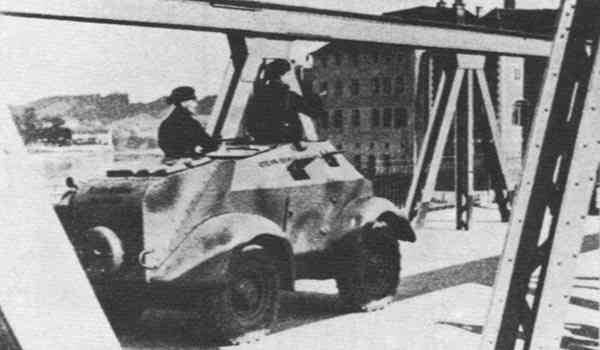
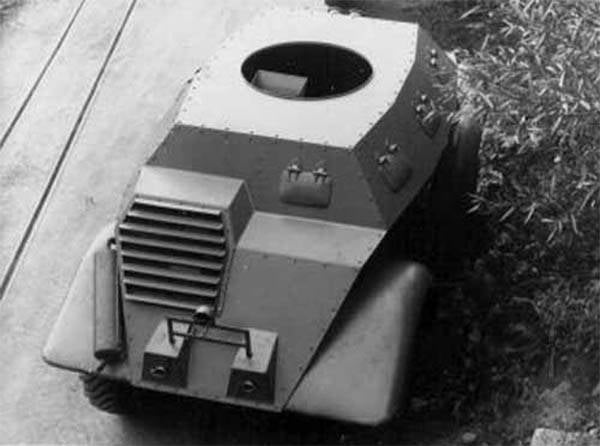
By the spring of 1938, Steyr-Daimler-Puch did not have time to hand over a single ADSK armored vehicle to the customer. After the Anschluss, the Austrian armored vehicles went to the German military. They did not finish building the installation batch of armored cars, but took into operation prototype machines. For several years, they have been limitedly used as police equipment.
***
For the 10-12 years the Austrian defense industry managed to develop and implement several projects of promising armored cars. Starting with the Heigl Panzerauto M.25 project, the Austrian designers were able to go from machine-gun armored vehicles based on the chassis of commercial trucks to machines developed from scratch, armed not only with machine guns, but also with guns. It is easy to see that by the mid-thirties of the company Austro-Daimler, engaged in the creation of Austrian armored vehicles, it was possible to achieve some success in this area.
However, the potential of the armored cars of Austria was not fully disclosed. At first this was hampered by the country's economic problems, and then big politics intervened. The accession of Austria to Germany actually put an end to its own development of military equipment. CC order for the supply of 25 armored vehicles ADGZ was the first and last contract of this kind. Germany had a large number of types of its own technology and therefore did not need Austrian. Finally, at the end of World War II, European countries began to abandon armored vehicles, replacing them with armored vehicles of other types. Austria was no exception and no longer developed new armored cars.
On the materials of the sites:
http://achtungpanzer.com/
http://aviarmor.net/
http://ost-front.ru/
http://shushpanzer-ru.livejournal.com/
http://kfzderwehrmacht.de/
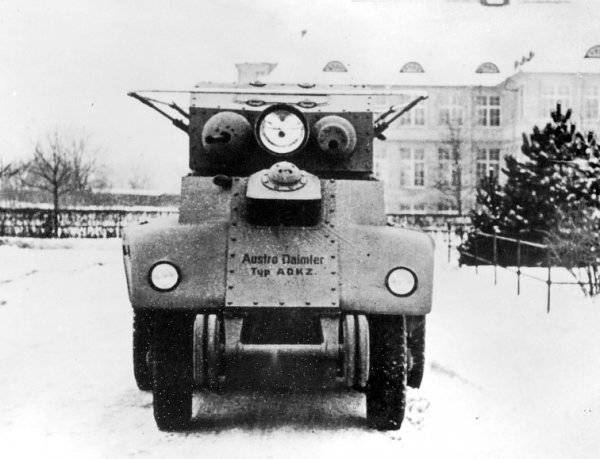
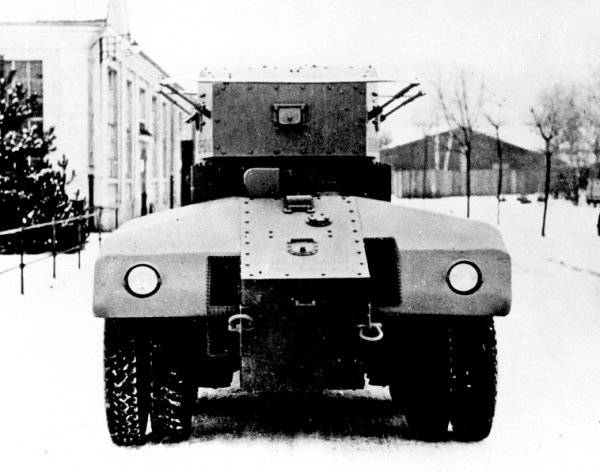
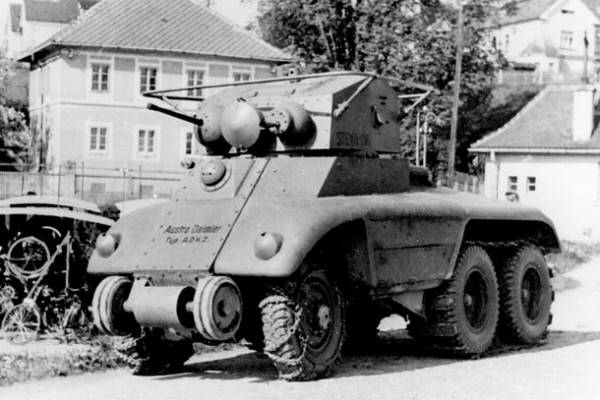
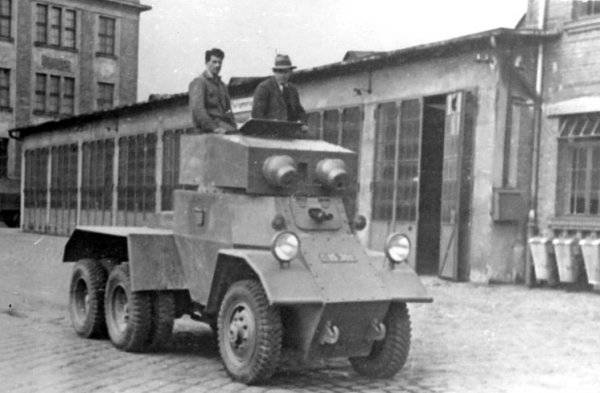
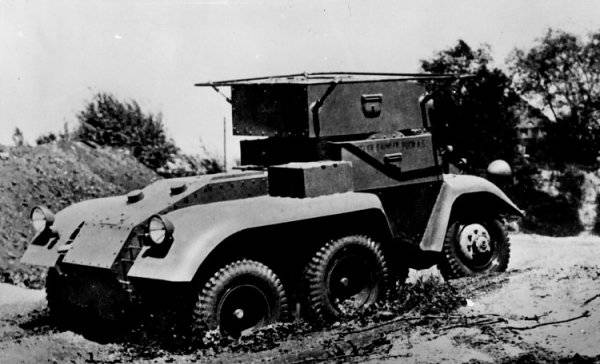
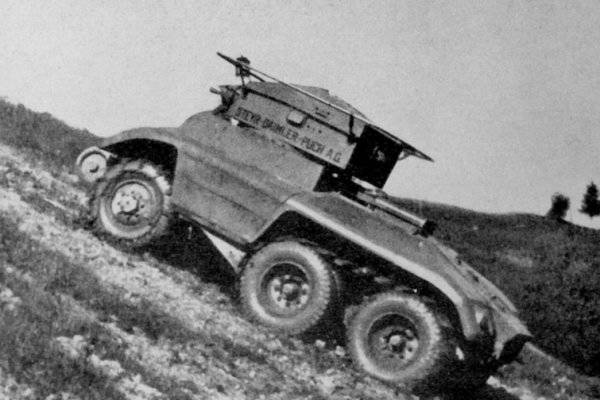
Information